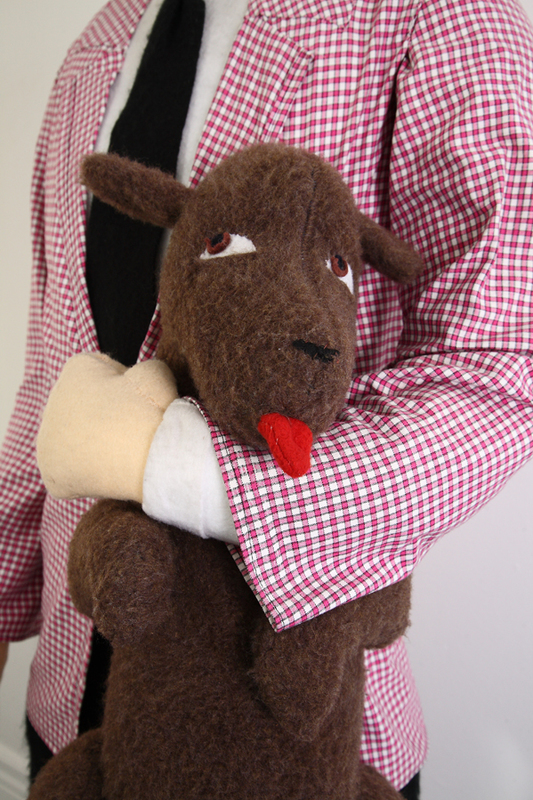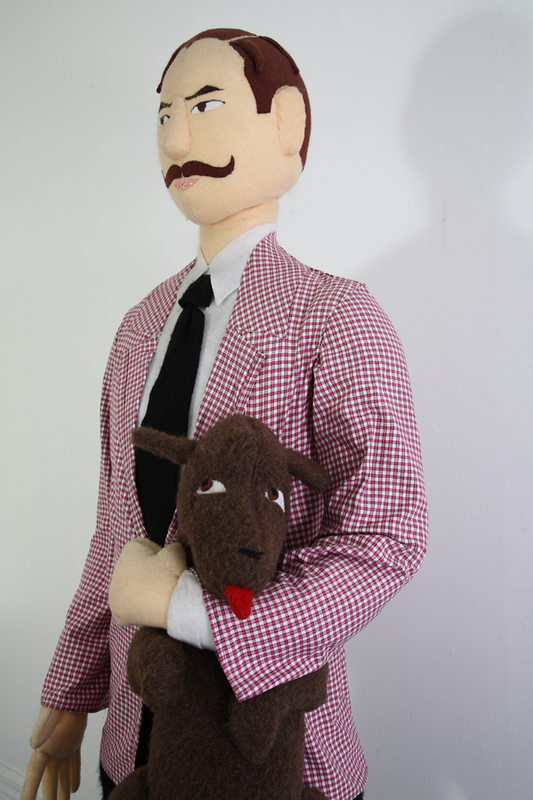Drue Langlois
- Artist Statement
- Curator Statement
- zingmagazine project
- Website
Artist Statement
Polio was a character I made up in 1997 for a video with my brother, Myles Langlois. In the video, Polio was being fired from a job for a variety of reasons. One of the managers sings these reasons to Polio in a brief (soft rock) song. The lyrics are as follows:
You come to work late every day
All you ever talk about is getting laid
You dropped acid in the coffee pot
The staff OD’d and the day was shot
You downloaded a virus and you wrecked the computers
From looking at pictures of girls’ naked hooters
You put a ham sandwich in the paper shredder
Wrote the boss’ wife a pornographic letter
Brought your sick dog to work in an empty beer box
When Anderson complained you called him a queerbox
These are just a few of the things you’ve done
Not to mention the times you pinched my buns
The manager escorts Polio from the building and Polio asks him to
light his jetpack for him. Polio blasts off but then returns to shoot the
manager in the chest several times.
Polio then returned in a story called “The Evil Adventures of Polio” which was published in “Protoprize” (by Samuel Appleface comics in 1999). In this story we find out he is in love with a beautiful prosti- tute named Lady Jane. He attempts to kidnap her but fails when his jetpack fuse is extinguished by the rain (he then escapes from a mob of 14 angry people, led by Lady Jane, who wish to kick his ass).
Polio’s next appearance was in “Polio vs Mittel” where his dog, Palsy, is swallowed whole by a wolf in the park. Polio and the wolf’s owner, Mittel, engage in a violent battle. While they are resting (after beating each other viciously) a giant, obese man named Gustaveric arrives in the park and swallows the wolf. Polio and Mittel defeat the giant (using a wasp covered ice cream cone) and take him to a hospital where a doctor first removes the wolf from Gustaveria’s belly, and then the dog from the wolf’s belly. Polio and Mittel become friends in the waiting room after their pets are returned to them.
The final appearance of Polio was in the “Protoprize” Trade Paperback compilation published by Hot Hail Comics in 2005. In this story he is working with a supernatural being called “The Slime Queen” and they are attempting to take over the world by reviving human corpses as an evil algae man army. The electrician, Dixie Snails, her friend, Double Amp, and three prostitutes, Gust, Corina Roberts, and Wendianne, foil the Slime Queen’s plans. At the end of this issue, Polio has been left unconscious in the house during the final battle out on the street so it is not known what has become of him.
I made the six-foot-tall Polio doll in the year 2000. The artist/musician Dame Darcy and I were planning a doll show at the time and I wanted to have some unusual and intimidating dolls to show at the exhibit. I’d been making a lot of dolls with Michael Dumontier and decided to try a larger size. I also made a Medusa doll that was about seven feet tall. We called the show “Dolls, Dolls, Dolls” and exhibited at the Royal Art Lodge studio. The Royal Art Lodge was a Winnipeg artist collective of which I was a member in 2000. After that, the large dolls were shipped to Richard Heller Gallery where I believe they were shown at least once.
Curator Statement
Though Drue Langlois was a member of art collaborative The Royal Art Lodge at the time it was made, his sculpture, Palsy With Polio, is from his own repertoire of images and narratives rather than the collective’s. Nonetheless, the work conjures up themes heavy on the agenda of the Royal Art Lodge—the slap-stick of the Marx brothers, the balletic drama of Buster Keaton, and the desired faux iconography of a drugstore cowboy. The title plays with the formal sculptural treatment even further: both Palsy and Polio are debilitating muscle ailments, and the two characters in Langlois’ sculpture are made entirely of felt, a material which seemingly would not be sturdy enough to hold the figurative, upright, unparalyzed forms. By poking fun at our sense of what a sculpture is (in the most traditional figurative sense), the soft Palsy With Polio even creeps into the viewer’s consciousness of the frozen form as sculpture, as well as the sculpture as commemorative portraiture (then again, given the artists’ and the collective’s penchant for narrative of the absurd, maybe I’m reading too much into it).





